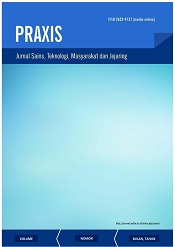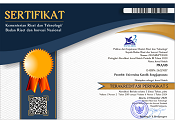Effect of Betel Lime (Ca(OH)₂) Concentration on the Physicochemical Characteristics of Sugar Palm Juice
Abstract
Palm sap is a sugary liquid obtained from tapping palm trees, commonly used to produce various forms of palm sugar, including liquid, solid, and powdered. Reducing sugars, such as glucose and fructose, can inhibit crystallization by binding to sucrose crystals, resulting in smaller crystals and higher water content, which limits the production of molded or powdered sugar. To control reducing sugars, laru (a buffer and antimicrobial solution) is added to prevent their formation. However, in KUP Kadhang Maju, laru is sometimes ineffective in maintaining pH and preventing microbial contamination, affecting the quality of extracted sap for palm sugar production. This study aims to optimize the amount of betel lime (Ca(OH)₂) in laru to produce optimal palm sap. Three Ca(OH)₂-to-water ratios were tested, with sap collected from afternoon until the following morning. The analyses included pH, reducing sugar content, viscosity, total dissolved solids, and color intensity. Statistical tests included normality, homogeneity, One-way ANOVA, and Duncan's post hoc tests. The optimal treatment, P2 (2 grams of Ca(OH)₂ per liter of water), resulted in ideal sap for crystallization, with a pH of 6.50, reducing sugar content of 3.76%, viscosity of 35.50 cP, total dissolved solids at 12.17 °Brix, and color values L* 26.81, a* 3.53, and b* 7.81.
Keywords
Full Text:
PDFDOI: https://doi.org/10.24167/praxis.v7i1.12683
View My Stats | ISSN 2622-9137 (media online)







